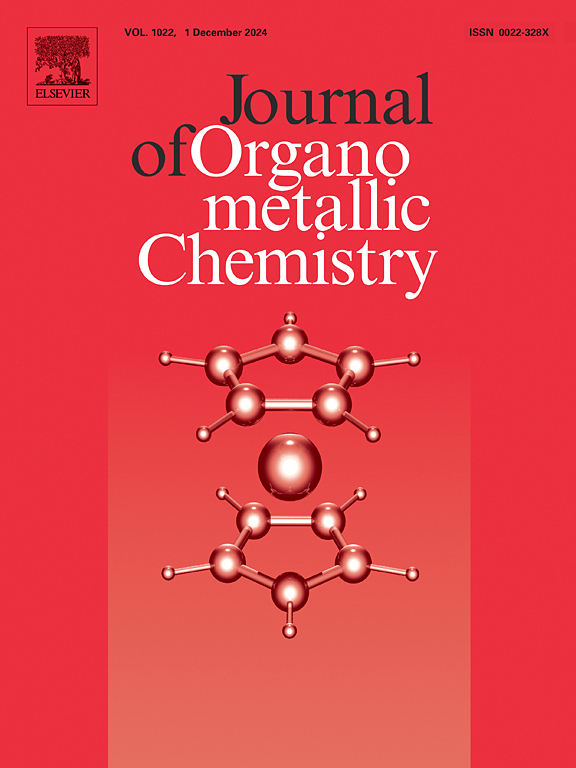镍催化的苯基氯化镁与氟芳烃交叉偶联中C−F活化的异裂键解离能
IF 2.1
3区 化学
Q3 CHEMISTRY, INORGANIC & NUCLEAR
引用次数: 0
摘要
由于C−F键与其他碳卤素键相比具有固有的惰性,因此在有机合成中活化C−F键仍然是极具挑战性的。本文通过密度泛函理论(DFT)计算,研究了镍催化的苯基氯化镁与4-氟苯甲醚的交叉偶联反应机理。计算结果表明,芳基C−F键的活化是由亲核镍和路易斯酸性镁协同催化的,亲核镍由去质子化的空气稳定型次级氧化膦(SPO)配体桥接。与C−O键的裂解相比,C−F键的这种不寻常的化学选择性活化是由异裂解键离解能(HBDE)控制的。在氟芳烃的HBDE和C−F活化能垒之间建立了线性自由能关系(LFER),进一步证实了HBDE在芳基C−F键的激活中起着重要作用。本文章由计算机程序翻译,如有差异,请以英文原文为准。

Heterolytic bond dissociation energy related to C−F activation in nickel-catalyzed cross-coupling of phenylmagnesium chloride with fluoroarenes
The activation of the C−F bond remains extremely challenging in organic synthesis due to its inherent inertness compared to other carbon-halogen bonds. Herein, a mechanistic study is described of the nickel-catalyzed cross-coupling of phenylmagnesium chloride with 4-fluoroanisole by the aid of density functional theory (DFT) calculations. The computations show that aryl C−F bond activation is assisted by the cooperative catalysis of nucleophilic nickel bridged by the deprotonated air-stable secondary phosphine oxide (SPO) ligand, along with Lewis acidic magnesium. Compared to the cleavage of C−O bond, this unusual chemoselective activation of C−F bond is controlled by heterolytic bond dissociation energy (HBDE). A linear free energy relationship (LFER) between fluoroarenes' HBDE and C−F activation energy barriers was established, further confirming that HBDE plays a significant role in the activation of aryl C−F bonds.
求助全文
通过发布文献求助,成功后即可免费获取论文全文。
去求助
来源期刊

Journal of Organometallic Chemistry
化学-无机化学与核化学
CiteScore
4.40
自引率
8.70%
发文量
221
审稿时长
36 days
期刊介绍:
The Journal of Organometallic Chemistry targets original papers dealing with theoretical aspects, structural chemistry, synthesis, physical and chemical properties (including reaction mechanisms), and practical applications of organometallic compounds.
Organometallic compounds are defined as compounds that contain metal - carbon bonds. The term metal includes all alkali and alkaline earth metals, all transition metals and the lanthanides and actinides in the Periodic Table. Metalloids including the elements in Group 13 and the heavier members of the Groups 14 - 16 are also included. The term chemistry includes syntheses, characterizations and reaction chemistry of all such compounds. Research reports based on use of organometallic complexes in bioorganometallic chemistry, medicine, material sciences, homogeneous catalysis and energy conversion are also welcome.
The scope of the journal has been enlarged to encompass important research on organometallic complexes in bioorganometallic chemistry and material sciences, and of heavier main group elements in organometallic chemistry. The journal also publishes review articles, short communications and notes.
 求助内容:
求助内容: 应助结果提醒方式:
应助结果提醒方式:


